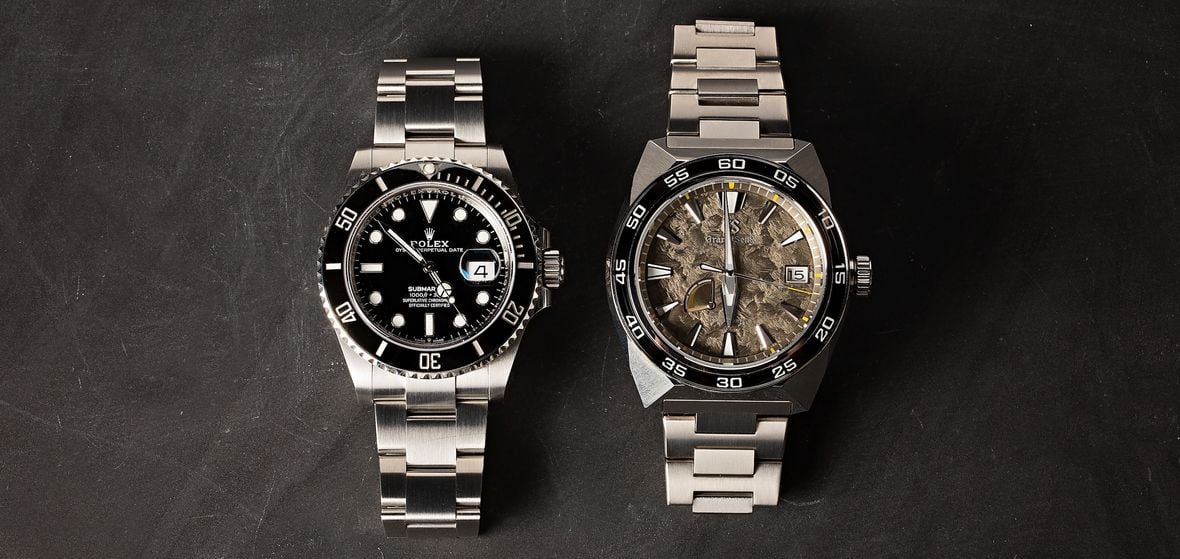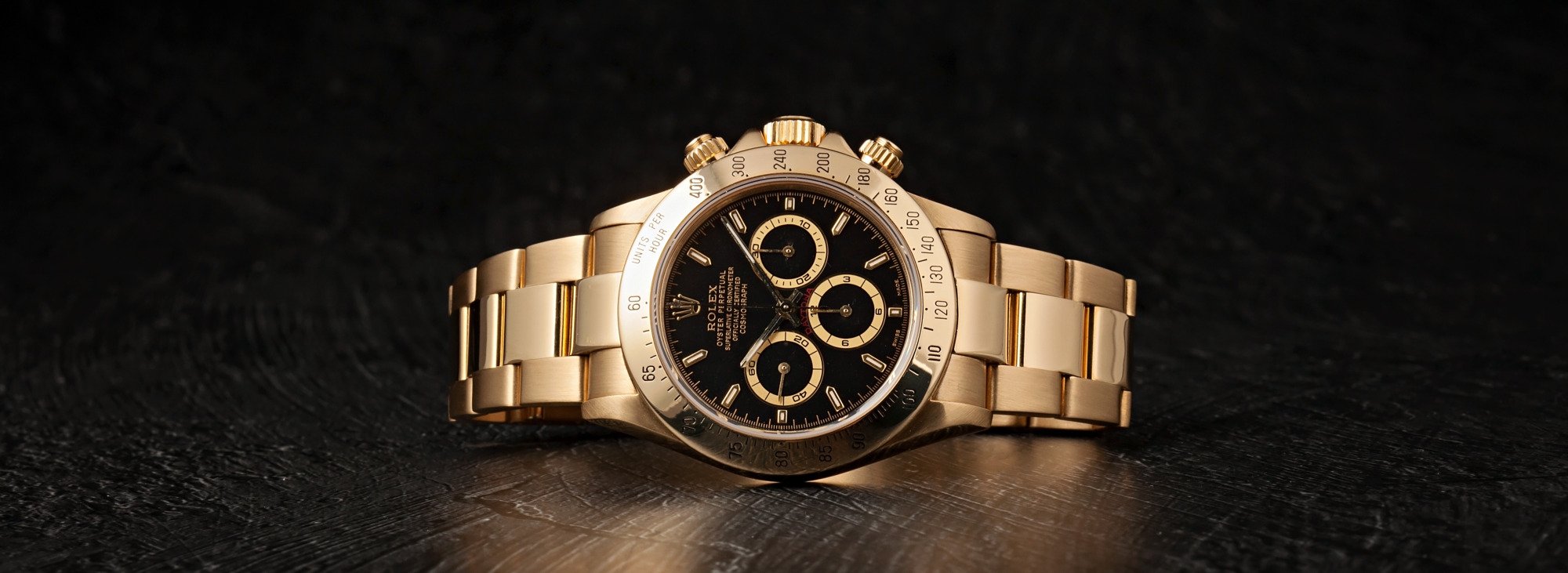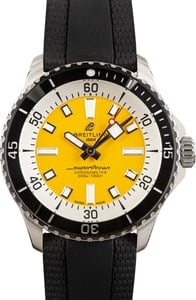When it comes to a reliable wristwatch that will hold its value, which brand is better? Grand Seiko vs Rolex? For some, that answer is easy: a new or pre-owned Rolex, hands down. However, these two brands stand out for their rich histories, exceptional craftsmanship, and iconic designs. Both brands have earned their place among the most respected names in the industry, but they have taken different paths to achieve their status.
Grand Seiko, a luxury sub-brand of the Japanese watchmaker Seiko, was founded in 1960 with the goal of creating the “perfect watch.” Since its inception, Grand Seiko has been dedicated to the pursuit of precision, durability, and understated elegance, drawing inspiration from the rich traditions of Japanese craftsmanship.
On the other hand, Rolex, a Swiss luxury watchmaker founded in 1905 by Hans Wilsdorf, has become synonymous with luxury, prestige, and innovation. The brand has pioneered numerous watchmaking technologies and has become a global symbol of success and achievement.
In this article, we will delve into the similarities and differences between Grand Seiko vs Rolex, comparing their origins, movements, designs, brand perception, and value. By exploring these aspects, we aim to provide a comprehensive understanding of what sets these two iconic watch brands apart and help readers appreciate their unique strengths and appeal.
Rolex Watches
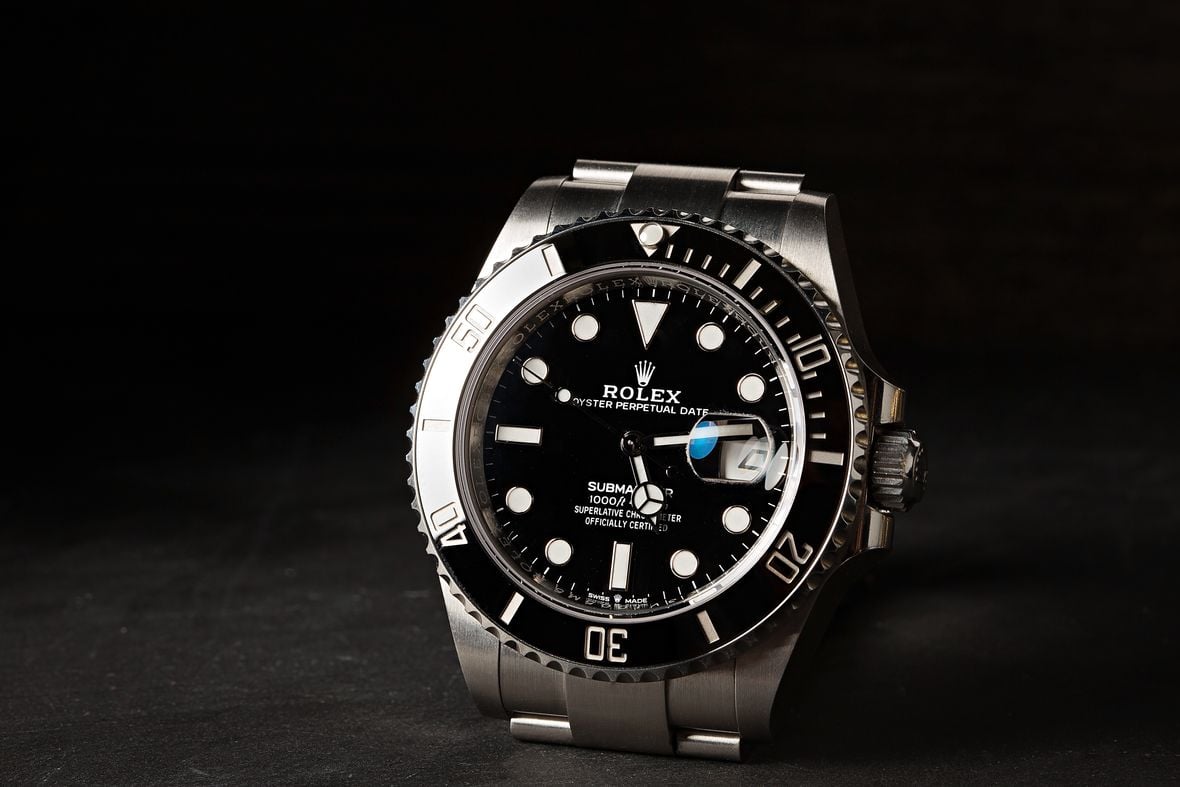
Rolex Fast Facts:
– Founded in 1905.
– Headquarters in Geneva, Switzerland.
– First brand to earn chronometer certification for a wristwatch.
– Invented the waterproof Oyster case in 1926.
– Produces approximately a million watches per year.
– The world’s most famous luxury watch manufacturer.
– All watches are made in Switzerland.
Grand Seiko Watches
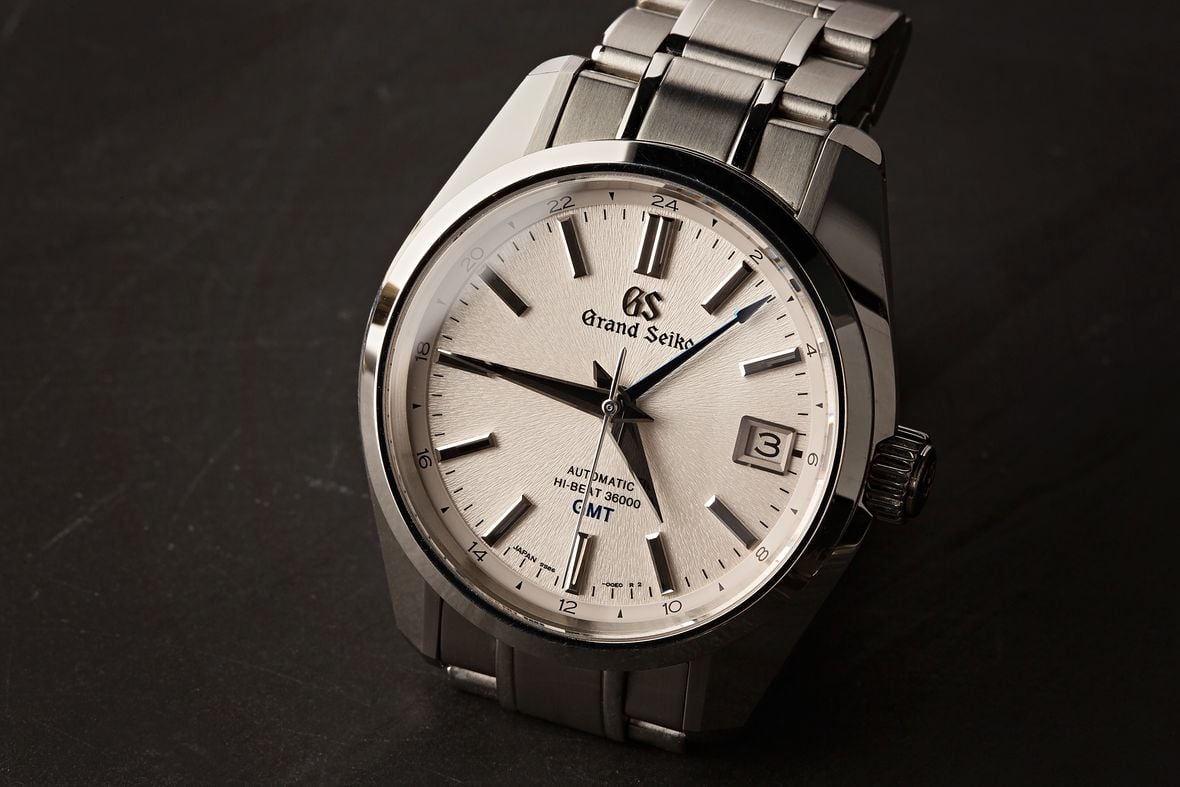
Grand Seiko Fast Facts:
– Seiko was founded in 1881; the first Grand Seiko was in 1960.
– Headquarters in Tokyo, Japan.
– Only sold in Japan until 2010.
– Became a separate brand from Seiko in 2017.
– Invented the Spring Drive movement.
– Watches inspired by nature.
– All watches are made in Japan.
Grand Seiko vs Rolex: Brand Origins and Heritage
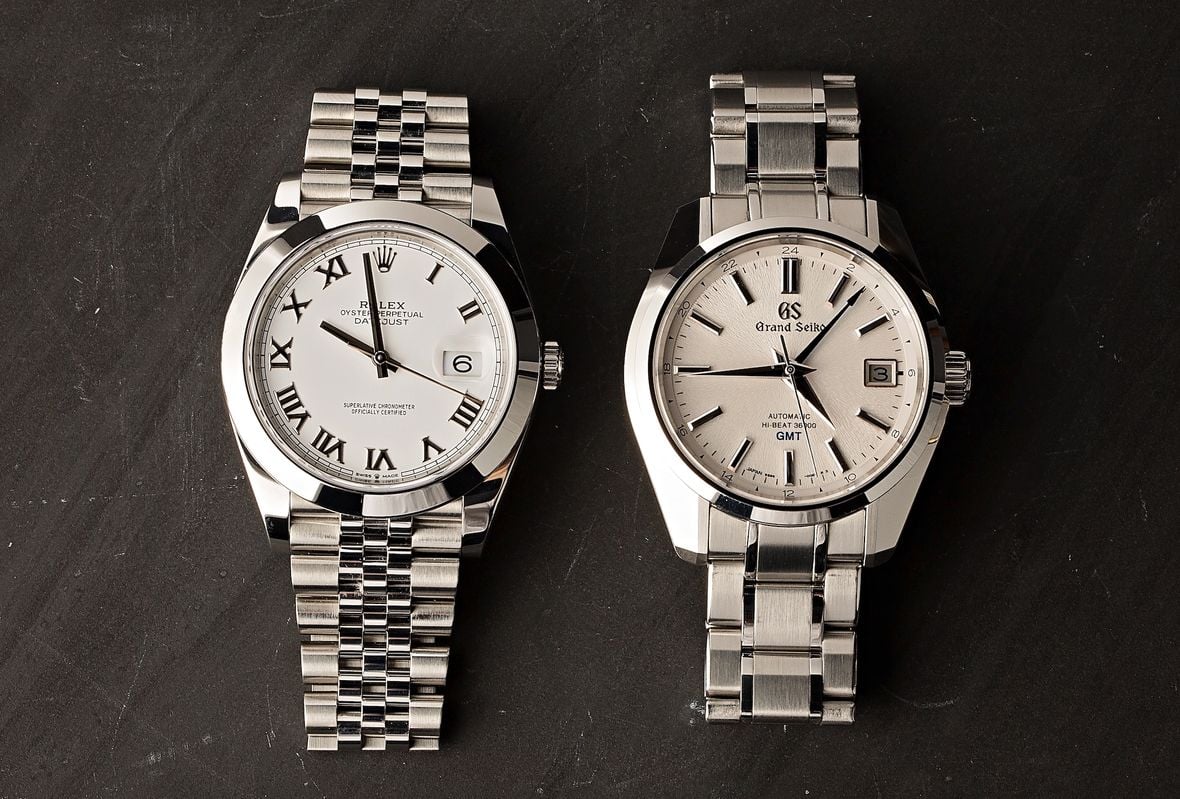
Grand Seiko’s history dates back to 1960 when Seiko, a well-established Japanese watchmaker, decided to create a luxury sub-brand that would showcase the pinnacle of their watchmaking skills. The goal was simple yet ambitious: to create the “perfect watch” that would excel in precision, durability, and beauty. To achieve this, Seiko assembled a team of its most talented watchmakers and gave them the freedom to innovate and refine their craft.
From the very beginning, Grand Seiko watches were characterized by their exceptional craftsmanship and attention to detail. Each timepiece was designed and manufactured entirely in-house, with every component subjected to rigorous quality control. The brand’s watchmakers drew inspiration from the rich traditions of Japanese craftsmanship, such as the art of Zaratsu polishing, which gives Grand Seiko watches their distinctive mirror-like finish.
On the other hand, Rolex was founded in 1905 by Hans Wilsdorf, a German-born entrepreneur, in London, England. Wilsdorf’s vision was to create elegant and reliable wristwatches suitable for everyday wear. In 1910, Rolex became the first wristwatch to receive the Swiss Certificate of Chronometric Precision from the Official Watch Rating Centre in Bienne, Switzerland, setting the stage for the brand’s future success.
Throughout its history, Rolex has been at the forefront of watchmaking innovation. In 1926, the brand introduced the Rolex Oyster case, the world’s first waterproof and dustproof wristwatch. In 1931, Rolex patented the Perpetual rotor, a self-winding mechanism that became the standard in automatic watches. These groundbreaking innovations, along with many others, have solidified Rolex’s position as one of the best Swiss watch brands, earning the brand a reputation for excellence that endures to this day.
Movements and Accuracy
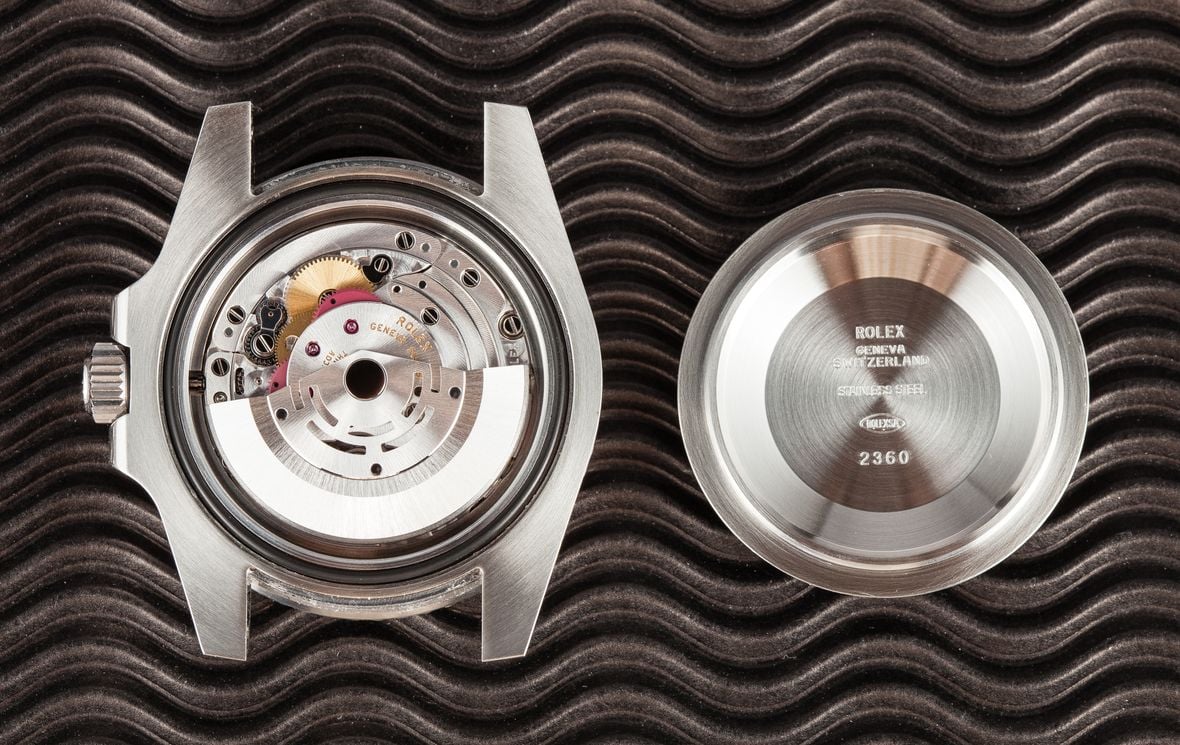
One of the key factors that sets Grand Seiko and Rolex apart is their approach to watchmaking. Grand Seiko is renowned for its dedication to precision and accuracy, with each watch undergoing rigorous testing and quality control. The brand’s in-house movements, such as the 9S mechanical, 9F quartz, and 9R Spring Drive, are testaments to its commitment to horological excellence.
The 9S mechanical movement, introduced in 1998, is hand-assembled by skilled craftsmen and features a precision rate of +5 to -3 seconds per day, surpassing the standards set by the Swiss Official Chronometer Testing Institute (COSC). The 9F quartz movement, launched in 1993, is accurate to ±10 seconds per year and features a specially sealed cabin to protect the movement from dust, humidity, and temperature fluctuations. Perhaps most impressive is the 9R Spring Drive movement, which combines the best of mechanical and electronic watchmaking. This innovative movement, first released in 2004, utilizes a mainspring as its power source and a quartz oscillator to regulate the watch’s accuracy, resulting in a smooth, gliding motion of the second hand and an accuracy rate of ±1 second per day.
Rolex, on the other hand, is known for its rugged durability and reliability. The brand’s watches are built to withstand the most challenging conditions, from the depths of the ocean to the heights of mountain peaks. Rolex’s in-house movements, such as the caliber 3135 and the newer 3235, are renowned for their robustness and precision. The caliber 3135, introduced in 1988, powers many of Rolex’s most iconic models, such as the Submariner and the Datejust. This movement features a Parachrom hairspring, which is resistant to shocks and temperature variations, and offers an accuracy of -2/+2 seconds per day. The caliber 3235, released in 2015, builds upon the success of its predecessor, incorporating Rolex’s patented Chronergy escapement, which improves energy efficiency and reliability.
To ensure the highest level of accuracy and performance, Rolex subjects its movements to a series of rigorous tests, both in-house and through independent certification. The brand’s Superlative Chronometer watch certification, introduced in 2015, guarantees an accuracy of -2/+2 seconds per day, a standard that is twice as stringent as that of the COSC. This certification process involves testing the fully assembled watch, not just the movement, under various conditions and positions to ensure optimal performance on the wrist.
Design and Aesthetics
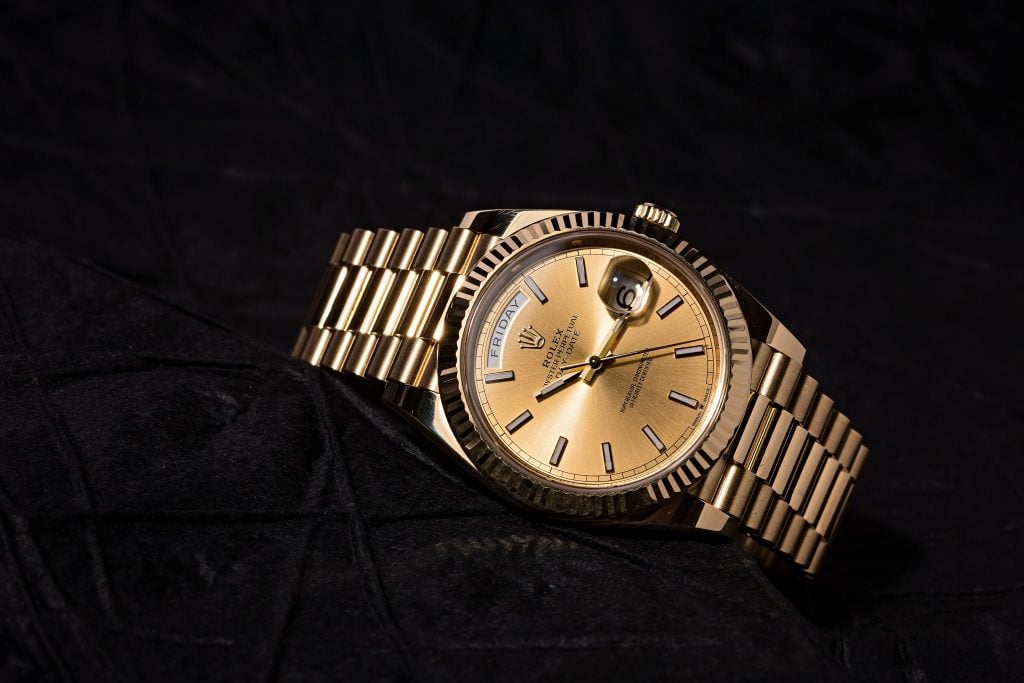
Grand Seiko and Rolex have distinct design philosophies that reflect their unique brand identities and heritage. Grand Seiko watches are characterized by their understated elegance, with a focus on simplicity, readability, and refined craftsmanship. The brand’s designs often draw inspiration from the natural beauty of Japan and adhere to the “Grammar of Design” principles established in 1967, which emphasize clean lines, polished surfaces, and a harmonious balance between form and function.
Grand Seiko’s signature case designs, such as the 44GS and 62GS, showcase the brand’s timeless aesthetic and Zaratsu polishing technique. These designs have been reinterpreted and refined over the years, but their core elements remain a constant in Grand Seiko’s contemporary collections.
In contrast, Rolex is known for its bold, instantly recognizable designs that have become iconic. The brand’s watches are often associated with luxury, success, and adventure, with models like the Submariner, Daytona, and GMT-Master II being coveted by collectors and enthusiasts.
Rolex’s design language is characterized by a strong, masculine aesthetic, with prominent bezels, chunky cases, and distinctive crown guards. The brand’s watches are designed to be functional and legible in any environment, with high-contrast dials, oversized luminous markers, and clear, easy-to-read fonts. Iconic Rolex design elements include the Cyclops lens, fluted bezel, Jubilee and Oyster bracelets, and Mercedes-style hands.
Rolex is also renowned for its use of high-quality materials and innovative technologies, such as 904L stainless steel, ceramic bezels, and proprietary gold alloys like Everose and Rolesium, which ensures the longevity and beauty of its watches.
Brand Perception and Prestige
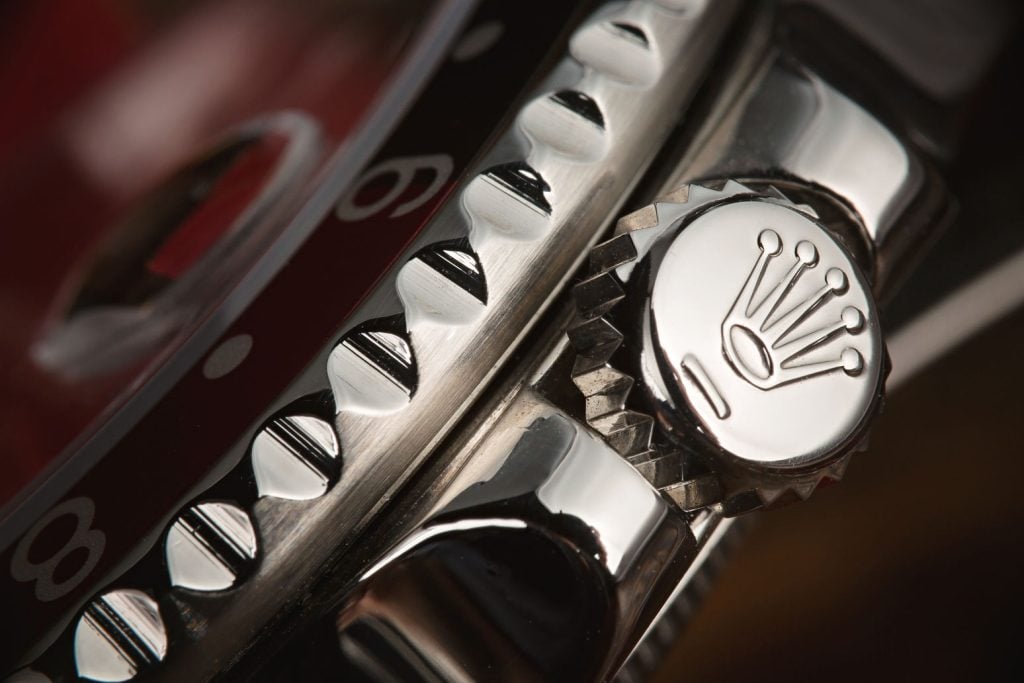
Grand Seiko has long been respected by watch enthusiasts for its exceptional craftsmanship, attention to detail, and horological expertise. However, for many years, the brand was primarily known and appreciated within Japan and among a niche group of enthusiasts outside its home country.
In recent years, Grand Seiko has made significant strides in expanding its global presence and increasing its brand recognition. The company has opened boutiques and authorized dealerships in major cities around the world, showcasing its watches to a broader audience. As a result, Grand Seiko has begun to gain wider recognition and appreciation among watch enthusiasts and luxury consumers, positioning it as a serious competitor to established luxury watch brands.
Rolex, on the other hand, is one of the most recognizable and prestigious luxury watch brands in the world. The brand’s name is synonymous with success, achievement, and status, and its watches are often seen as symbols of wealth and refinement. Rolex’s reputation for producing high-quality, reliable, and durable watches has been built over more than a century of horological excellence.
The brand’s iconic designs have become legendary, with a rich history and association with adventure, sport, and exploration. Rolex’s prestige is further enhanced by its association with influential and successful individuals, strategic partnerships, and sponsorships.
Moreover, Rolex’s strong brand identity and extensive marketing efforts have contributed to its enduring success and global recognition. The combination of Rolex’s history, iconic designs, association with success and achievement, and powerful marketing has made it one of the most sought-after and respected luxury watch brands in the world, with an unrivaled level of prestige and brand loyalty.
Price and Value
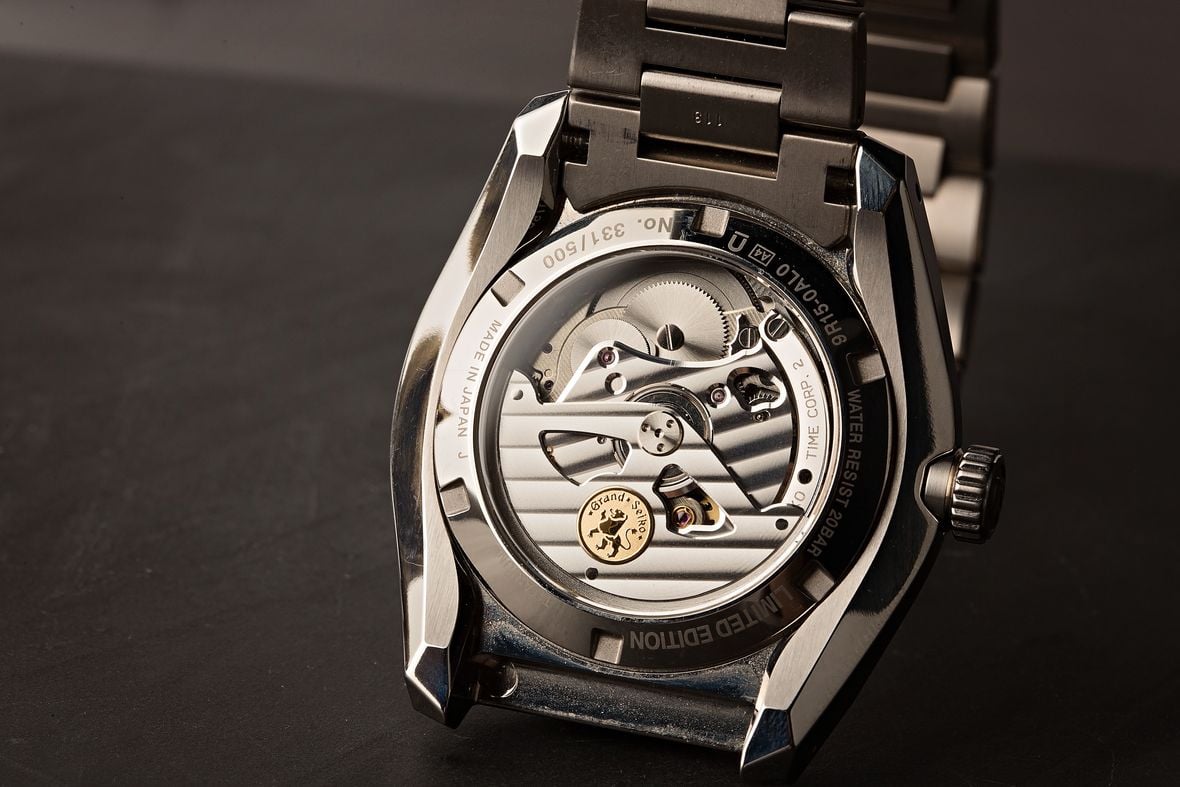
Grand Seiko watches are often priced lower than comparable luxury watches from Swiss brands, despite offering similar or superior levels of quality, craftsmanship, and horological excellence. This can be attributed to factors such as lower production costs in Japan, a more streamlined distribution network, and a smaller marketing budget compared to many Swiss brands. However, the lower price point of Grand Seiko watches does not diminish their value proposition, as they offer exceptional value for money, providing the opportunity to own a high-quality, expertly crafted timepiece with advanced technological features at a more accessible price point.
Rolex, on the other hand, is known for its premium pricing, which reflects the brand’s prestige, exclusivity, and enduring value. Rolex watches are often more expensive than those of many other luxury watch brands due to factors such as high production costs, the use of premium materials, and significant investment in marketing and advertising. Despite their higher price points, Rolex watches are widely considered to offer excellent value for money, particularly when viewed as long-term investments, as they are known for their durability, reliability, and timeless design, which contribute to their strong resale value and enduring appeal.
While Grand Seiko and Rolex watches occupy different price points within the luxury watch market, both brands offer excellent value for money in their own unique ways. Grand Seiko provides the opportunity to own a high-quality timepiece at a more accessible price point, usually falling within the under 5k collections. while Rolex’s premium pricing reflects the brand’s prestige, exclusivity, and enduring value, as Rolex is a great long-term investment option.
Final Thoughts – Grand Seiko vs Rolex
Grand Seiko and Rolex are two remarkable brands in the world of luxury watches, each with a unique history, philosophy, and approach to watchmaking. While both are renowned for their commitment to quality, precision, and craftsmanship, they appeal to different segments of watch enthusiasts and collectors.
Grand Seiko’s focus on understated elegance, technical excellence, and Japanese artisanship has earned it a loyal following among those who appreciate the brand’s dedication to horological expertise and exceptional value for money. As Grand Seiko continues to expand its global presence, it is poised to become an increasingly prominent player in the luxury watch market.
Rolex, on the other hand, has long been synonymous with luxury, prestige, and enduring value. The brand’s iconic designs, innovative technologies, and powerful marketing have made it one of the most recognizable and sought-after names in the world of luxury watches. Rolex’s position as a status symbol and its association with success and achievement have contributed to its enduring appeal and strong brand loyalty.
Choosing between Grand Seiko vs Rolex ultimately comes down to individual preferences, priorities, and financial means. Those who value understated elegance and technical excellence may gravitate toward Grand Seiko, while those who prioritize prestige and exclusivity may find Rolex to be the more compelling choice. Regardless of the brand chosen, both Grand Seiko and Rolex offer exceptional timepieces that showcase the best of their respective watchmaking traditions, each with its own unique strengths and appeals.
Owning either a Grand Seiko or a Rolex is a testament to an appreciation for fine craftsmanship, horological excellence, and the enduring allure of luxury watches.
Grand Seiko vs Rolex: Watch Comparisons
Rolex vs. Grand Seiko: Dive Watches
Dive watches are one of the most popular types of timepieces in the entire industry and both Rolex and Grand Seiko offer some standout options.
Rolex Submariner ref. 126610LN
The Rolex Submariner watch is, without a doubt, one of the most iconic dive watches ever created. It dates back to 1953, featuring a design that has remained largely intact, despite decades of evolution and upgrades. New to the market is the reference 126610LN, which includes a unidirectional diver’s bezel topped with a ceramic insert, large hour markers and Mercedes hands filled with luminous blue Chromalight, and full Oystersteel (904L stainless steel) construction. It features a 41mm case, water-resistance up to 1,000 feet, and Rolex’s new-generation Caliber 3235 movement.
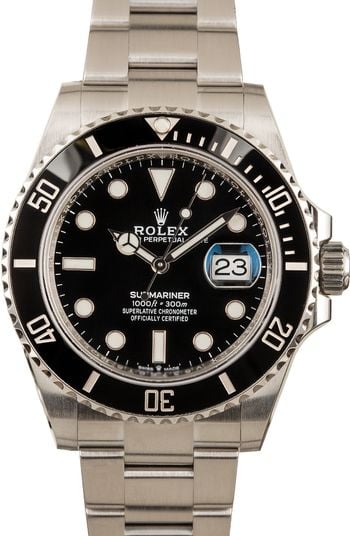
Submariner 126610LN Specs:
– Reference Number: 126610LN
– Case Size: 41mm
– Crystal: Sapphire
– Materials: Stainless Steel
– Bezel: Unidirectional
– Movement: Mechanical, Self-Winding
– Power Reserve: 70 Hours
– Dial: Hours, Minutes, Seconds, Date
– Retail Price: $10,250
Grand Seiko Dive Watch ref. SBGA229
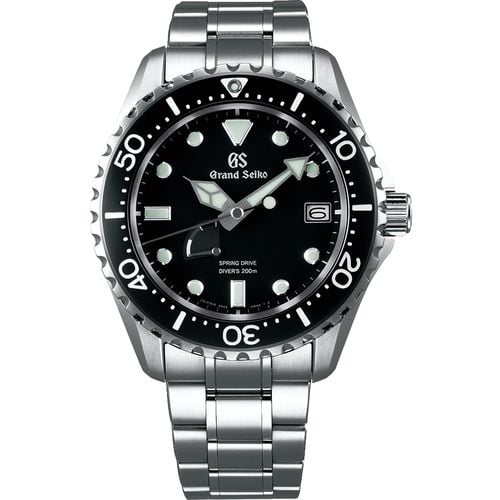
The Grand Seiko ref. SBGA229 hails from the brand’s Sport Collection. It features a strikingly similar feature set as the Submariner with a stainless steel construction, a black dial topped with large Lumibrite plots, and a black unidirectional timing bezel. At 44mm in diameter, it’s quite a bit larger than the Submariner and features a lower depth rating of 660 feet. Outward appearances aside, the SBGA229 has the Submariner beat with a more accurate movement. The Calibre 3235 powering the Submariner promises accuracy up to -2/+2 seconds per day, while the SBGA229 is powered by the Caliber 9R65 Spring Drive movement with an accuracy rating of fewer than 15 seconds per month.
Grand Seiko SBGA229 Specs:
– Reference Number: SBGA229
– Case Size: 44.2mm
– Crystal: Sapphire
– Materials: Stainless Steel
– Bezel: Unidirectional
– Movement: Spring Drive
– Power Reserve: 72 Hours
– Dial: Hours, Minutes, Seconds, Date, Power Reserve Indicator
– Retail Price: $6,000
Rolex vs. Grand Seiko Dive Watch Price Comparison:
The Grand Seiko SBGA229 will set you back several thousand dollars less than the Submariner. However, while the Submariner is currently commanding significantly more than its original retail price on the secondary market, the SBGA229 is holding steady at or just below retail when purchased pre-owned. If you’re lucky enough to invest in the Submariner at retail, it is positioned as a better investment than reference SBGA229. However, unless you plan on spending several years on a waiting list, you will likely end up paying nearly twice the price of the Grand Seiko if you wish to add the Rolex Submariner 126610LN to your collection.
Rolex vs. Grand Seiko: Chronographs
Chronographs are another incredibly popular type of timepiece and both Rolex and Grand Seiko offer watches that offer this type of stopwatch functionality.
Rolex Daytona ref. 116500LN
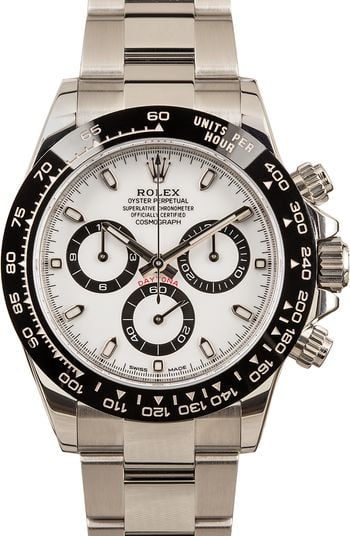
The Rolex Cosmograph Daytona watch is a relatively straightforward watch, with a tachymeter bezel calibrated to 400 units, a 12-hour stopwatch function within the movement, coordinating sub-dials, and central hour, minute, and seconds hands. The reference 116500LN hit the market in 2016, bringing with it the first instance of a ceramic bezel within the stainless steel Daytona series. It features an Oystersteel construction, Chromalight finished hour markers and hands, and either a white or black dial. At 40mm in diameter, the Rolex Daytona has become more than just a reliable motorsport wristwatch; it’s also a comfortable, everyday timepiece and a universally recognized status symbol.
Daytona 116500LN Specs:
– Reference Number: 116500LN
– Case Size: 40mm
– Crystal: Sapphire
– Materials: Stainless Steel
– Bezel: Tachymeter
– Movement: Mechanical, Self-Winding
– Power Reserve: 72 Hours
– Dial: Hours, Minutes, Seconds, 12-Hour Chronograph
– Retail Price: $15,100
Grand Seiko Chronograph ref. SBGC221 & SBGC223
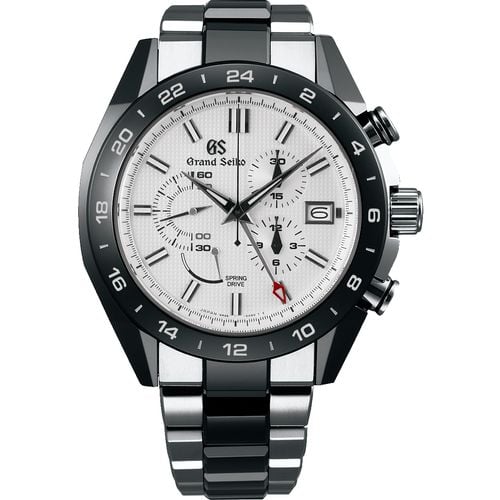
At 46.4mm in diameter and 16.2mm thick, Grand Seiko’s chronograph wears substantially larger on the wrist than the Rolex Daytona. However, it compensates for its large size with a lightweight combination of titanium and ceramic. Another notable difference between the two brands is the bezel. The Daytona features a Tachymeter bezel, and the Grand Seiko is equipped with a 24-hour bezel for use with its additional GMT hand. Both watches are powered by a chronograph movement with a 72-hour power reserve; however, while the Daytona relies on a traditional mechanical movement, the Grand Seiko uses one of the brand’s Spring Drive movements, which offers superior timekeeping accuracy. Additionally, one of the biggest selling points for the Grand Seiko chronograph over the Daytona is the additional functionality of its movement. In addition to its time-telling and chronograph functions, it also offers users a date display, power reserve indicator, and a secondary time zone displayed by an additional 24-hour GMT hand.
Grand Seiko SBGC221 Specs:
– Reference Number: SBGC221 (White Dial) & SBGC223 (Black Dial)
– Case Size: 46.4mm
– Crystal: Sapphire
– Materials: Titanium & Ceramic
– Bezel: 24-Hour
– Movement: Spring Drive
– Power Reserve: 72 Hours
– Dial: Hours, Minutes, Seconds, Date, 12-Hour Chronograph, Power Reserve Indicator, GMT Functionality
– Retail Price: $14,800
Rolex vs. Grand Seiko Chronograph Price Comparison:
The stainless steel Rolex Daytona has been a hot item on the secondary market since its debut in 2016, and it often commands more than twice its retail price pre-owned. Incredibly high demand for steel Rolex sports watches, coupled with persisting low inventory, has driven the Daytona 116500LN’s price to more than $30k used. The Grand Seiko Chronograph SBGC221 and SBGC223 average between $12k and $16k pre-owned, depending on the condition of the watch and the dial color. Again, Rolex wins this price comparison but only if you are able to find one at its original retail price. Given the current open-market prices for these two different chronograph watches, you will likely end up paying more than twice for the Rolex Daytona compared to its Grand Seiko Chronograph counterpart.
Rolex vs. Grand Seiko: Classic Watches
Alongside a range of purpose-built sports watches, both Rolex and Grand Seiko produce classic watches that are designed to be worn every day throughout a variety of different activities.
Rolex Datejust 41 ref. 126300
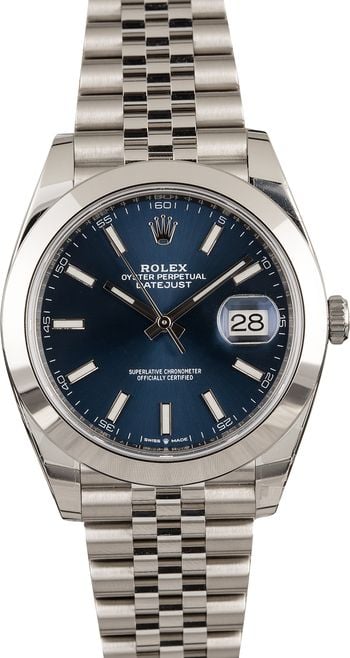
Rolex introduced the first Datejust in 1945. However, it wasn’t until 2009 that the series received a larger 41mm case with the arrival of the Datejust II (compared to the 36mm case diameter of its predecessor). The Rolex Datejust 41 hit the market a few years later in 2016, replacing the Datejust II and featuring a more refined case and the new-generation Caliber 3235 movement. A few years later in 2019, Rolex released the highly-anticipated reference 126300. It is an entirely Oystersteel edition of the current 41mm series with a smooth bezel, Oyster or Jubilee bracelet, and the option of a variety of different dial colors.
Datejust 126300 Specs:
– Reference Number: 126300
– Case Size: 41mm
– Crystal: Sapphire
– Materials: Stainless Steel
– Bezel: Smooth
– Movement: Mechanical, Self-Winding
– Power Reserve: 70 Hours
– Dial: Hours, Minutes, Seconds, Date
– Retail Price: $8,050
Grand Seiko Heritage ref. SBGP005
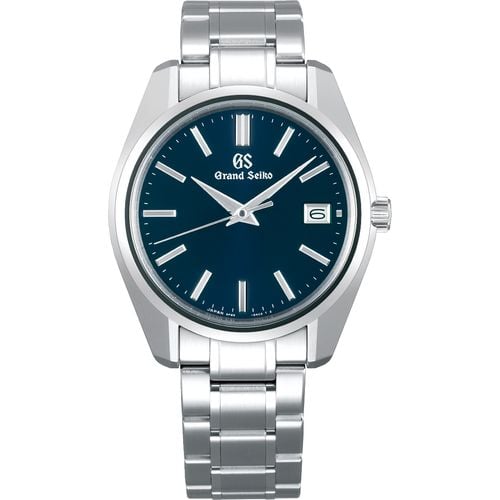
The most notable difference between the Grand Seiko ref. SBGP005 and the Rolex Datejust 41 ref. 126300 is the movement, with the Datejust 41 utilizing a traditional self-winding mechanical movement and the Grand Seiko featuring one of the brand’s high-accuracy quartz movements. Both watches are presented in stainless steel and feature a date window on the dial at the 3 o’clock location. The Grand Seiko SBGP005 is also similar in size with a contemporary 40mm case diameter. One could also argue that both watches exude just the right amount of understated opulence that many luxury watch collectors crave, with top-quality materials and expert-level finishing. Additionally, with its ultra-accurate quartz movement the Grand Seiko ref. SBGP005 is a true set-it-and-forget-it watch and it is rated to be accurate within just 10 seconds per year.
Grand Seiko SBGP005 Specs:
– Reference Number: SBGP005
– Case Size: 40mm
– Crystal: Sapphire
– Materials: Stainless Steel
– Bezel: Smooth
– Movement: High-Accuracy Quartz
– Power Reserve: 3 Years (battery life)
– Dial: Hours, Minutes, Seconds, Date
– Retail Price: $3,200
Rolex vs. Grand Seiko Classic Watch Price Comparison:
On the secondary market, the Rolex Datejust 41 ref. 126300 averages around $10k used. If you were able to purchase one at retail, your Datejust 41 has already appreciated in value. The Grand Seiko SBGP005 is currently reselling for just about the exact same as its brand-new retail price. The reference SBGP005 is indeed the more affordable option; however, it’s also more likely to lose value in the coming years, whereas the Rolex Datejust 41 has already appreciated in value since coming to market in 2019.
*Images courtesy of Grand Seiko.
